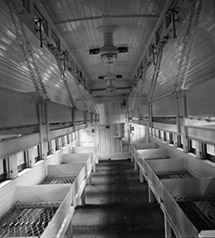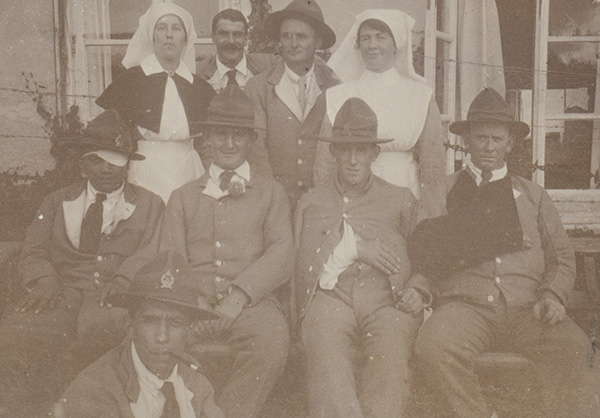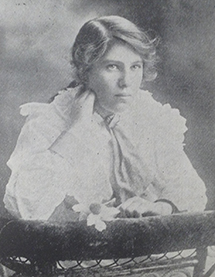
A New Zealand rail carriage fitted out as a hospital car in 1915 to transport the wounded and sick who had been evacuated home from the war.Godber, Albert Percy. Ref: APG-0843-1/2-G. Alexander Turnbull Library, Wellington, New Zealand.
Military nursing
When Utting enlisted in the New Zealand Army Nursing Service and boarded the HS Maheno as a passenger in July 1915, she was aged 31 and working as a private nurse. Utting and the other passenger nurses left the Maheno at Suez, Egypt in August while the ship continued on to the Dardanelles and the fighting at Gallipoli.
After a short stretch working in Egypt, Utting completed her first tour of duty on a troopship in September-October 1915, nursing the wounded and sick from Gallipoli who were being evacuated home on the Tofua. On arrival in Dunedin, Utting and other medical staff accompanied some of the men north on trains which included customised hospital carriages.
Utting went back to Egypt a few weeks later on the Tofua with the 8th Reinforcements. From January 1916, she nursed at hospitals in Cairo and then in June 1916 she returned to New Zealand on duty on the Maunganui. A month later, Utting sailed for the third time to the northern hemisphere and joined the staff at No. 1 New Zealand General Hospital, Brockenhurst, England.
 Ruth Utting, back left, ca. late 1917. Wiremu Paora, at front with pipe, was wounded atthe Somme. Image: Kawharu whānau. Online Cenotaph, Auckland War Memorial Museum- Tāmaki Paenga Hira - WW1-300.
Ruth Utting, back left, ca. late 1917. Wiremu Paora, at front with pipe, was wounded atthe Somme. Image: Kawharu whānau. Online Cenotaph, Auckland War Memorial Museum- Tāmaki Paenga Hira - WW1-300.
Also on staff at Brockenhurst was Sister Daphne Commons, who trained at Auckland Hospital and was a fellow AUC student. Off-duty one afternoon in July 1917, Commons and Utting took three patients, who were too unwell to go on official outings, to visit nearby Beaulieu Abbey. They wandered around the Abbey and had afternoon tea at a cafe, supplementing its rationed food with their own supplies of biscuits and tinned fruit. Commons wrote, `Two of them had not been for an outing before (in fact it was the first time downstairs for one) after being in hospital for almost a month, so you may imagine how they enjoyed it.’
Sister Utting would have welcomed this break from the long hours and gruelling work. The workload eventually took its toll and she was invalided home in June 1918 after twice being admitted to hospital with insomnia, headaches, depression and tiredness. This neurasthenia was attributed to the ‘strain of continuous nursing work.’





